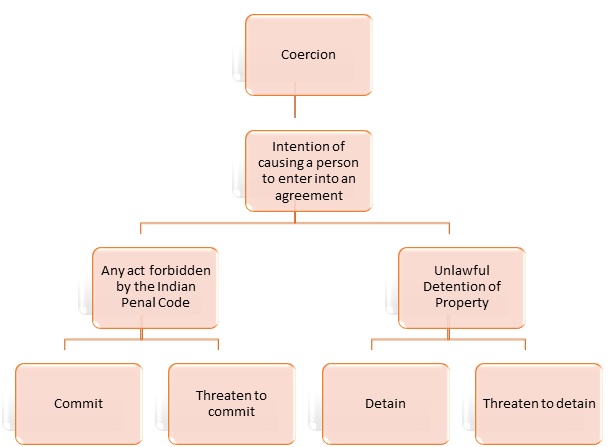CONCEALMENT
Concealment of a design is another form of abetment that has been covered under section 118-120 of Indian Penal Code, 1860. Before indulging in the intricacies of the offence of abetment through concealment, it is important to understand the meaning of concealment and design.
According to Black’s law dictionary, ‘Conceal’ means “To hide; secrete; withhold from the knowledge of others; to withdraw from observation; to withhold from utterance or declaration; to cover or keep from sight.”
In the same source, ‘design’ has been defined as “the plan or scheme conceived in mind and intended for subsequent execution, preliminary conception of idea to be carried into effect by action, contrivance in accordance with preconceived plan.”
Putting the two definitions together, concealing design can be understood as the act of hiding (by act or omission) or misrepresenting a plan or scheme which may be harmful or may create difficulties for the victim.
For example: A informs a police officer, that B would be committing robbery in the house of D knowingly that B would be committing robbery in house of C which is opposite to D’s house. This misrepresentation would be concealing the real design or plan of any offence and hence, is punishable.
ACTIVE CONCEALMENT AND NON-DISCLOSURE
Now the question is concealment punishable only when malafide intention is there? The answer is YES. Active concealment i.e., intentional concealment is necessary for constitution of a crime.
It is to be noted that non-disclosure of vital information with the knowledge that such non-disclosure may aid in an offence, is also a type of concealment.
The difference between the active concealment and non-disclosure is simple yet very thin. Non-disclosure is simply when one does not convey an information, for instance, in a police station where a police officer is supposed to inform to the magistrate about the arrest of a criminal. However, he did not do so.
Active Concealment, however, would mean that the police officer communicated about all the persons arrested except the one that he intended to kill in the custody and he made it impossible for the magistrate to find out about that particular arrest.
ESSENTIALS OF THE OFFENCE
The act of concealment has two facets attached to it:
The first is when the concealment of a design takes place by people who would be committing the offence;
Second is when the concealment is done by people who are not the part of the commission of the offence, but have a knowledge about the execution of such design.
Consider a situation, X with two of his friends Y and Z have been planning to commit a murder in apartment number 5. A lives in apartment number 4 that shares a wall with number 5. A hears everything his neighbours are planning. The two situations when X, Y or Z conceals the information from police and when A does not disclose such information despite having the knowledge about the consequences from the non-disclosure of such information, both will be considered as concealment.
Section 118-120 of IPC deal with concealment before or while the commission of offence, whereas section 202 – 203 of IPC deals with concealment after the commission of the offence that shall be dealt under false evidence and offences against public justice.
PUNISHMENT FOR CONCEALMENT
If concealment is committed to facilitate or with the knowledge that the concealment would probably facilitate the commission of an offence, then in such a case, such concealment is punishable considering two aspects:
Whether the commission of the offence for which concealment was committed was completed?
What would have been the punishment for the offence for which concealment was done, if it would have been done otherwise?
Condition 1 [Section 118]: If offence planned is punishable with death or imprisonment for life –
If the commission of the offence is completed: the offender should be punished with imprisonment upto seven years and fine.
If the commission of the offence is not-completed: the offender should be punished with imprisonment upto three years and fine.
Condition 2 [Section 120]: If offence planned is punishable with imprisonment –
If the commission of the offence is completed: the offender shall be punished with imprisonment upto one-fourth period of years provided for the offence. For example, if commission of cheating is punished with maximum 7 years then one fourth of such period i.e. 7/4 years would be the punishment for concealment to facilitate cheating.
If the commission of the offence is not-completed: the offender shall be punished with imprisonment upto one-eighth of the maximum period of such offence (7/8 years in case of cheating) or with fine provided for the offence or with both.
CONCEALMENT BY PUBLIC SERVANT [Section 119]
If a public servant conceals a design (by act or omission by any means) or misrepresents any information to facilitate the commission of an offence which he is supposed to prevent, he shall be held liable for concealment.
Condition 1: If offence planned is punishable with death or imprisonment for life, then the public servant would be punishment with imprisonment upto 10 years.
Condition 2: If offence planned is committed then the public servant shall be punished with imprisonment upto one-half of the maximum imprisonment period provided for the offence planned or with fine provided for the offence or with both.
Condition 3: If offence is not committed then the public servant shall be punished with imprisonment upto one-fourth of the maximum imprisonment period provided for the offence planned or with fine or with both.
References
- KD Gaur: Criminal Law-Cases and Materials, 9th ed.
- PSA Pillai: Criminal Law,12th Edition.
- Ratanlal & Dhirajlal: Indian Penal Code (PB), 36th ed.
- Indian Penal Code 1860.



Comments
Post a Comment